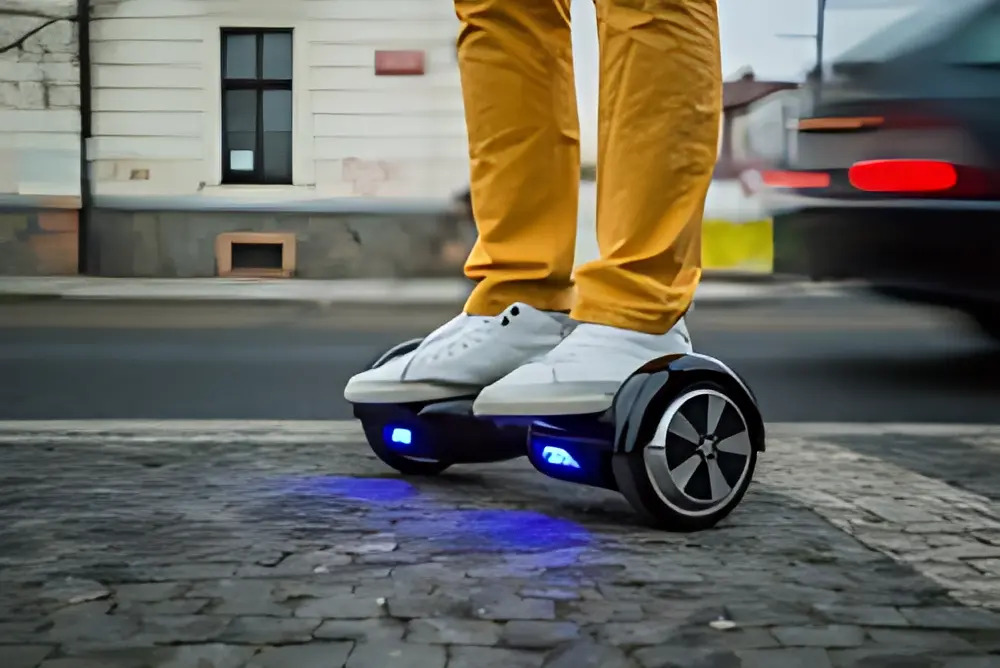In recent years, hoverboards have emerged as a popular mode of personal transportation, captivating the imagination of both young and old. These self-balancing scooters, often referred to as "hoverboards," have transformed the way we think about mobility, offering a fun and efficient way to navigate urban environments. This article explores the history, technology, safety considerations, and future of hoverboards.
A Brief History
The concept of hoverboards can be traced back to science fiction, with the iconic hoverboard featured in the "Back to the Future" film series sparking interest in personal levitation devices. However, the real-life version we know today began to take shape in the early 2010s. The first commercially successful hoverboards were introduced in 2013, quickly gaining popularity due to their unique design and ease of use. As technology advanced, manufacturers began to improve the design, safety features, and performance of these devices, leading to a surge in their popularity.
How Hoverboards Work
Hoverboards operate using a combination of gyroscopic sensors and accelerometers that detect the rider's movements. When a rider shifts their weight forward, the hoverboard accelerates; leaning back slows it down. This intuitive control mechanism allows users to navigate with ease, making it accessible for people of all ages. Most hoverboards are powered by rechargeable lithium-ion batteries, providing a range of approximately 6 to 12 miles on a single charge, depending on the model and riding conditions.
The design of hoverboards typically includes two wheels, a platform for standing, and a set of footpads equipped with pressure sensors. Some models also feature Bluetooth connectivity, allowing users to connect their smartphones for music playback or to track their riding statistics.
Safety Considerations
While hoverboards offer an exciting way to travel, safety is a significant concern. Early models faced scrutiny due to reports of overheating batteries and fires. In response, manufacturers have implemented stricter safety standards and improved battery technology. When purchasing a hoverboard, it’s essential to look for models that comply with safety certifications, such as UL 2272, which ensures that the device has been tested for electrical and fire safety.
Riders should also take precautions to ensure their safety. Wearing protective gear, such as helmets, knee pads, and elbow pads, can help prevent injuries in case of falls. Additionally, riders should practice in safe, open areas before venturing into crowded spaces or on public roads.
The Benefits of Hoverboards
Hoverboards offer several advantages as a mode of transportation. They are environmentally friendly, producing zero emissions and requiring minimal energy to operate. This makes them an attractive alternative to traditional vehicles, especially in urban areas where traffic congestion and pollution are significant concerns.
Moreover, hoverboards provide a fun and engaging way to exercise. Riding a hoverboard requires balance and coordination, which can help improve core strength and overall fitness. Many users find that hoverboarding is an enjoyable way to stay active while commuting or exploring their neighborhoods.
The Future of Hoverboards
As technology continues to evolve, the future of hoverboards looks promising. Manufacturers are exploring new features, such as enhanced battery life, improved speed, and advanced safety systems. Some companies are even experimenting with hoverboards that can travel over water or rugged terrain, expanding the possibilities for personal transportation.
Additionally, the integration of smart technology is likely to play a significant role in the future of hoverboards. Features such as GPS tracking, anti-theft systems, and app connectivity could enhance the user experience and provide added security.
Conclusion
Hoverboards have revolutionized personal transportation, offering a unique blend of fun, convenience, and eco-friendliness. As technology advances and safety measures improve, these devices are likely to become even more popular. Whether used for commuting, recreation, or simply enjoying a leisurely ride, hoverboards represent a modern marvel that continues to capture the imagination of riders around the world. As we look to the future, it’s clear that hoverboards are here to stay, paving the way for innovative solutions in personal mobility.





Comments